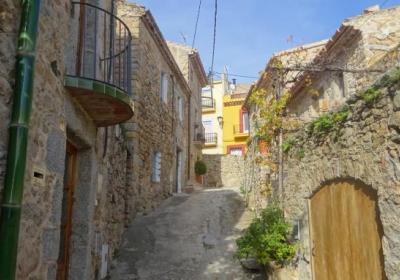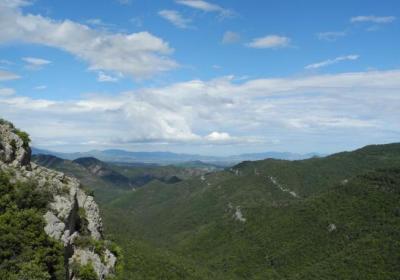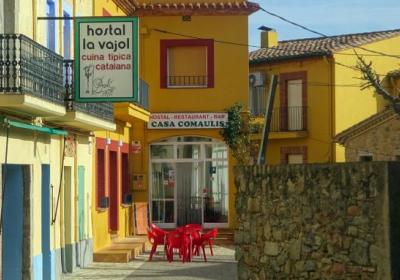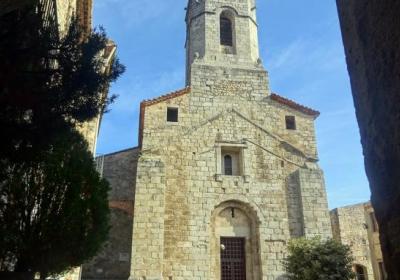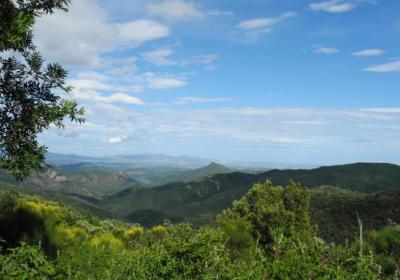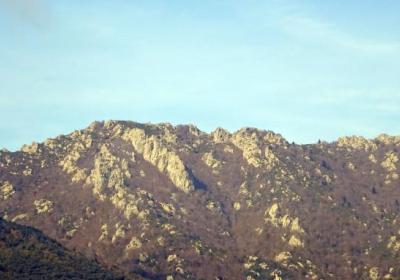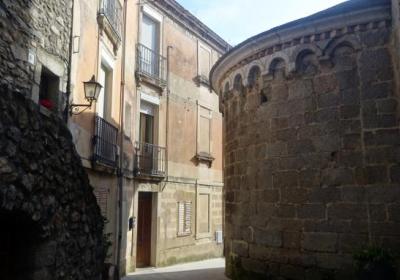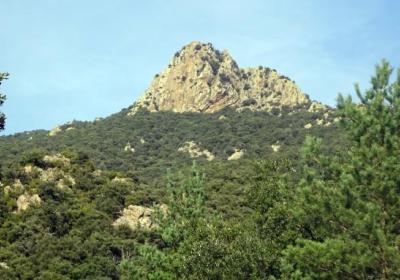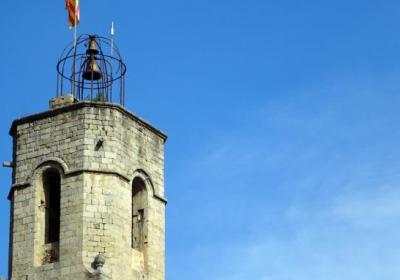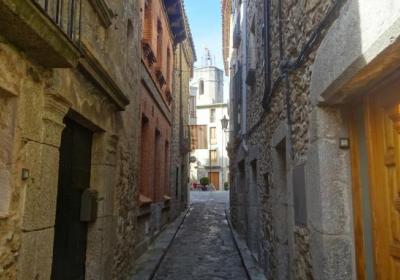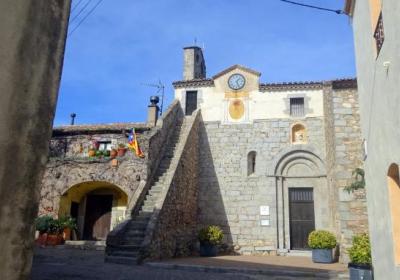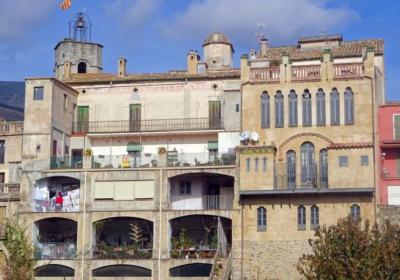A long stage of the Trans-Pyrenees Crossing that begins in Vajol and takes you to the small town of Albanyà, in the valley of the Muga River. Throughout this journey the GR 11 runs on mainly dirt tracks, which only occasionally let you go on short stretches of trails. During the fifth stage of the journey you will enter the area known as Salinas-Bassegoda where you will discover a lovely town: Maçanet de Cabrenys.
Considerable. Derived from the length and ascent to overcome. This stage does not have any technical difficulties.
No special equipment required.
Alt Empordà. 01:50.000. Editorial Alpina.
Topographic base of Catalonia 1:25.000. Geological and Cartographic Institute of Catalonia (ICGC).
Let's start the fifth stage (1) Vajol (0: 00 - 546m). Leave the village heading towards the SW you will immediately reach the Empordà Viewpoint, a place that, as its name suggests, offers us some very good views of the Empordà. Follow the red and while GR markers and climb some meters until you reach the Mina Canta, an old talc mine during the Spanish Civil War that was used as a hiding place for gold and art works. Go around Creu Hill (623m) to the right and you will gradually start to descend, first by a dirt road and then a path. You will reach the road for Maçanet de Cabrenys, which you will take for a few meters to cross the Mas Castells Waterway. Immediatly leave it behind and continue on a track and a path to (2) Suro de la Pubilla (1:20 - 326m), an old oak tree that has been declared a monument.
Continue ahead and after about 3.5 km you will reach (3) Maçanet de Cabrenys (2:15 - 372m). Enter the town with the road, passing by a sports facility, coming to a crossroads. The GR 11 trail continues to the left (SE), but if we want to visit Maçanet de Cabrenys, we can enter the town with the street on your right (NW). Maçanet de Cabrenys is a beautiful old town full of history. Ancient fortified town, with some of the walls still standing. Its church, Sant Martí, is in the Romanesque style.
We resume our progress through a wide track that heads towards the SE. You reach a point where you leave the track and take a path off to the right and directly down to the Molí d'en Robert restaurant. At this point you will rejoin the wide track, now heading westwards and you will go up a wooded ridge and around to the (4) Sant Andreu d'Oliveda Chapel (4: 00 - 385m), which appears in documentation in the year 951. Continue the route going up to Oliveda Hill. At this point the trail turns left (S) and down a ravine. Continue along a path that leads to the Rimaló area. Pass by the farmhouse in ruins, and you will slowly begin to ascend again towards the west until reaching Rovirós Hill. The road turns to the left (S) and you will arrive at (5) Trilla Pass (6:00 - 693m), the highest point of the stage.
Now you will approach the final stretch of the day. From Trilla Pass you must make a long descent of almost 8 km to the town of Albanyà. Pass by the beautiful Romanesque church of Sant Feliu de Carbonils. Throughout this section, you will move forward on dirt tracks that you will only occasionally leave for short cuts before reaching Albanyà. Finally, you will reach (6) Albanyà (7: 40 - 237m), the last Empordà town in the Trans-Pyrenees Crossing. Albanyà is a quiet town full of charm that revolves around the beautiful Romanesque church of Sant Pere, which was the chapel of the former Benedictine monastery that was founded there in the 9th century.
Discover a little known but very beautiful area of Empordà Salines - Bassegoda.
Spend a night in the beautiful Muga Valley.
The Empordà Viewpoint, which says: "On a clear day, you will see all of Empordà from the viewpoint."
Learn the secrets of Mina Canta.
In Mina Canta a treasure was hidden that was valued at more than $ 500 million? During the Spanish Civil War, in this old talc mine, Juan Negrin, president of the Spanish Republic, built a vault where he hid paintings from the Prado Museum and gold bullion from the Bank of Spain.
The charming town of Maçanet de Cabrenys. According to legend, the origins of Maçanet de Cabrenys are found in the Carolingian hero Roland and his hammer, which he used against the Saracens. The legend of Roland says that after winning his battles, he threw his hammer from the bridge of Ceret saying: "Wherever my hammer falls, there is where Maçanet de Cabrenys will be." In the town square there is an iron bar that represents Roland's hammer.

